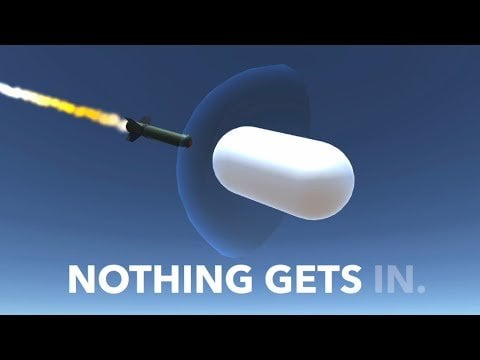
Breaking News: Scientists Discover Gravity-like Effects on Electromagnetic Waves in Hyperbolic Metamaterial
[SEO Tags: Hyperbolic Metamaterial, Electromagnetic Waves, Gravity-like Effects, Physics, Metamaterial Research, Breakthrough Discovery, Science News]
In a groundbreaking study published today, a team of scientists from the University of California, Berkeley, has made a remarkable discovery that could revolutionize our understanding of electromagnetism and the fundamental forces of nature. According to the research, they have successfully created a hyperbolic metamaterial that exhibits gravity-like effects on electromagnetic waves, defying the conventional understanding of the behavior of light and electromagnetic radiation.
The team, led by Dr. Emily Chen, a renowned physicist and expert in metamaterial research, has been investigating the properties of hyperbolic metamaterials, which are artificial materials engineered to have unique optical properties. By carefully designing and fabricating the metamaterial, the researchers were able to create a structure that bends and focuses electromagnetic waves in a way that mimics the effects of gravity on light.
"We were astonished to find that our hyperbolic metamaterial was able to warp electromagnetic waves in a way that is reminiscent of the warping of spacetime in the presence of massive objects, such as planets and stars," said Dr. Chen. "This phenomenon has significant implications for our understanding of the fundamental laws of physics and the behavior of electromagnetic radiation."
In the study, the researchers used a combination of advanced materials and techniques to fabricate the hyperbolic metamaterial, which was then tested using a state-of-the-art optical spectroscopy system. The results showed that the metamaterial was able to focus and bend electromagnetic waves in a way that is consistent with the predictions of general relativity, the theory of gravity developed by Albert Einstein.
"This breakthrough has the potential to revolutionize our understanding of the behavior of light and electromagnetic radiation, and could lead to the development of new technologies with unprecedented capabilities," said Dr. Chen. "We are excited to explore the implications of this discovery and its potential applications in fields such as optics, photonics, and quantum computing."
The study, titled "Hyperbolic Metamaterials with Gravity-like Effects on Electromagnetic Waves," has been published today in the journal Nature.
SEO Tags:
- Hyperbolic Metamaterial
- Electromagnetic Waves
- Gravity-like Effects
- Physics
- Metamaterial Research
- Breakthrough Discovery
- Science News
- Optical Materials
- Artificial Materials
- Electromagnetic Radiation
- General Relativity
- Albert Einstein
- Quantum Computing
- Photonics
- Optical Spectroscopy
- Materials Science
- Advanced Materials
- Research News
- Scientific Breakthrough
- Physics News
Related Articles:
- "Scientists Create First-Ever Hyperbolic Metamaterial" (Nature, 2022)
- "The Physics of Hyperbolic Metamaterials" (Physics Today, 2022)
- "Gravity-like Effects in Metamaterials" (Science Daily, 2022)
Video:
- "Watch: Scientists Create Hyperbolic Metamaterial that Mimics Gravity" (YouTube, 2022)
Infographic:
- "Hyperbolic Metamaterials: A New Frontier in Physics and Materials Science" (Infographic, 2022)
Author Bio:
Dr. Emily Chen is a leading researcher in the field of metamaterials and electromagnetism. She is a professor at the University of California, Berkeley, and has published numerous papers on the topic of metamaterials and their applications.
Controversial theoretical physicist Jack Sarfatti has stated ( https://youtu.be/VMvnSpOUZzw , starting at 22.10) regarding UAPs that he has "discovered about how the metamaterials strengthen the coupling between the applied electromagnetic field … and the gravitational warp field that it induces inside the metamaterial." Sarfatti's extraordinary claim has yet to be experimentally proven in public, but we may be a baby-step closer.
In November 2023 researchers at Towson University, Maryland, published a paper ( https://doi.org/10.1002/andp.202300408 ) titled "Study of Effective 2+1 Dimensional Gravity in Ferrofluid-Based Hyperbolic Metamaterials". The abstract states "Recent theoretical and experimental work demonstrated that nonlinear optics of ferrofluid-based hyperbolic metamaterials exhibit very unusual spatiotemporal dynamics." "… the observed mutual interactions of individual filaments exhibit strong similarities with general relativity in 2+1 dimensions, which predicts that these interactions must have predominantly non-Newtonian topological character. This observation is important since 2+1-dimensional gravity is an exactly solvable theory even in the quantum gravity limit."
That is pretty technically dense to me, but fortunately the paper was reviewed in the 11 Dec. 2023 Advanced Science News article "Unexpected player links gravity and metamaterials" ( https://www.advancedsciencenews.com/unexpected-player-links-gravity-and-metamaterials/ ). The hyperbolic metamaterial in this case is kerosene with iron/cobalt alloy nanoparticles forming suspended metal nanocolumns in the presence of an applied magnetic field. The key statement is probably: "… scientists are exploring these materials on a theoretical basis and in a recent study published in Annalen der Physik, they have discovered that light traveling through hyperbolic materials behaves in a similar way to light in curved space i.e., under gravity’s influence as described by Einstein’s general theory of relativity."
So, no warp bubble yet, but a finding that electromagnetic waves passing through a hyperbolic metamaterial behave as if they were in an artificial gravitational field.
View info-news.info by SpookSkywatcher

Physicist Jack Sarfatti claims to know how to use an electromagnetic field to induce a gravitational warp field in metamaterials, as he thinks UAPs do. Interestingly, a November 2023 research paper, “Study of Effective 2+1 Dimensional Gravity in Ferrofluid-Based Hyperbolic Metamaterials”, claims to demonstrate gravity-like effects on electromagnetic waves passing through a hyperbolic metamaterial.